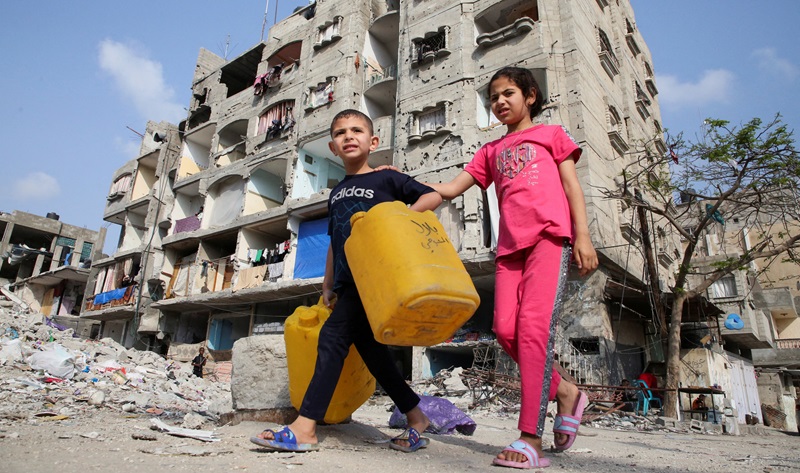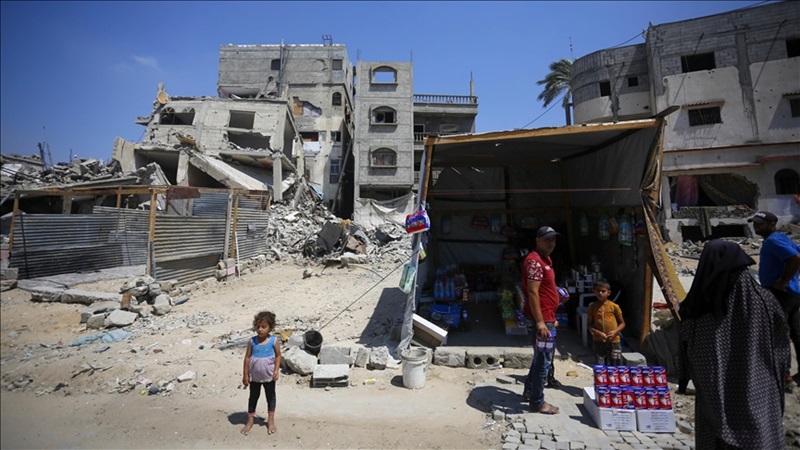The «All Eyes on Rafah» campaign has become a global sensation, with a staggering 47 million individuals sharing and engaging with its content. The viral phenomenon centers around Rafah, a city on the Gaza Strip’s southern border, which has become a focal point for international attention.
The campaign’s success can be attributed to the power of social media, enabling millions of people worldwide to partake in the discourse surrounding the city’s situation. The speed at which «All Eyes on Rafah» spread is a testament to how digital platforms can amplify voices and facilitate global conversations. The campaign has also garnered significant attention due to its emotive storytelling and visually captivating content, which have sparked a sense of empathy and urgency among viewers.
The surge in shares not only signifies an increased awareness about Rafah’s circumstances but also suggests a collective desire for change. As such, the «All Eyes on Rafah» campaign has underscored the potential of digital activism in mobilizing mass participation and bringing underreported issues to the forefront of global consciousness.
Origins of the «All Eyes on Rafah» Slogan
The phrase «All Eyes on Rafah» has its roots in the socio-political climate of the Middle East, specifically in relation to the Palestinian city of Rafah. This city, located on the border of Egypt and the Gaza Strip, has been a focal point of much conflict and humanitarian crises throughout history.
The slogan emerged as an international call to focus attention on the conditions and struggles faced by the inhabitants of this city. It is an appeal for global awareness and action, highlighting the need for international intervention and aid. It is a cry for justice and a demand for the human rights of the people in Rafah to be acknowledged and upheld.
The phrase is used by activists, human rights groups, and concerned citizens worldwide to draw attention to the often overlooked plight of Rafah’s residents. It represents a collective effort to spotlight the city, drawing attention to the harsh realities its inhabitants face in the hope of instigating positive change. The phrase’s origins are thus deeply rooted in compassion, humanity, and the relentless pursuit of justice. The significance of the slogan «All Eyes on Rafah» lies in its powerful message of solidarity and its ability to unite people from all walks of life in support of a common cause – the wellbeing and freedom of the Rafah population.
It is a rallying cry for all those committed to making a difference in the lives of others, regardless of geographical boundaries. Though the phrase may be simple, its implications and the movement it encapsulates are of monumental importance, reflecting the global community’s ability to come together in times of adversity.

The Journey of the Photo: How It Went Viral in Just 48 Hours
The journey of a photograph, from being a mere click of a camera to becoming a viral sensation on the internet, is an intriguing narrative. It all begins with the capture of a moment, an image that has the potential to resonate with millions around the globe.
The photo, initially shared on a social media platform, begins its journey towards virality, propelled by the intrigue or emotion it evokes. Within the first few hours, likes, shares, and comments start pouring in, each individual interaction serving as a catalyst, escalating its reach across various platforms and geographies.
As these interactions multiply, algorithms begin to take notice, further amplifying the photo’s reach. It gets featured on the feeds of users who might not even be directly connected to the original poster. The image then starts gaining momentum, snowballing into an unstoppable force, with users from all corners of the earth viewing, sharing, and reacting to it.
Then come the influencers and viral content aggregators, who, spotting the rising trend, share the image on their platforms, thus exposing it to their vast follower base. Alongside, the photo starts getting featured in digital news articles and blog posts, further magnifying its presence across the digital realm.
Finally, within just 48 hours of its initial post, the photograph achieves viral status, becoming a topic of conversation, a meme, a symbol, or even a movement. It’s an incredible journey that demonstrates the power of digital connectivity and the collective consciousness of internet users worldwide.
This phenomenon, while fascinating, also brings to the fore the question of responsibility and ethics in the digital space, as the content that goes viral can have far-reaching impacts, both positive and negative. Thus, the journey of a photograph becoming viral in just 48 hours is an enthralling tale of our times, a testament to the potent influence of social media and digital connectivity.
The Role of AI in Amplifying the Viral Post
Artificial Intelligence (AI) has significantly transformed the digital landscape, particularly in the realm of social media. The role of AI in enhancing the virality of a post is substantial and multifaceted.
AI algorithms analyze user behaviors, preferences, and interactions on social media platforms to determine the type of content that will engage and appeal to users. This analysis is then used to curate personalized feeds, ensuring that the content that is most likely to go viral is strategically placed before the audience likely to share or engage with it.
AI also aids in the detection of trending topics, which are essential for creating viral content. By identifying patterns and correlations in massive data sets, AI can predict potential viral posts before they gain traction. This predictive capacity allows marketers and content creators to capitalize on trends and create content that resonates with the audience’s current interests.
Moreover, AI-powered chatbots and virtual assistants play a role in spreading viral posts. They can share popular content with users, thereby increasing the reach of the post. In the era of information overload, AI helps in sifting through the noise and identifying posts with viral potential.
In essence, AI acts as a powerful catalyst, promoting the visibility and spread of viral content on social media platforms. Its capabilities in understanding user behavior, predicting trends, and optimizing content delivery have made it a game-changer in the digital marketing sphere.
However, as AI continues to shape the dynamics of viral posts, it is crucial to consider its impact on the quality of content and potential for misuse. The balance between leveraging AI for optimal content promotion and ensuring ethical and responsible use is key to harnessing its full potential.

Leveraging Instagram Features for Successful Social Campaigns
Instagram, as a social media platform, offers a plethora of features that can be leveraged to fuel successful social campaigns. One of the most effective tools is Instagram Stories, which can be utilized to share behind-the-scenes content, engage with followers via polls or questions, or promote new products or services.
Similarly, Instagram Live serves as an excellent platform for real-time interaction with followers, enabling a brand or organization to foster a sense of community and engagement. Instagram’s Shopping feature is another powerful tool, allowing businesses to showcase their products directly on the platform and promoting instant purchases. Instagram’s algorithm also favors content with high engagement, therefore, using these features strategically can help boost visibility and reach.
Furthermore, the use of trending hashtags and geotags can increase discoverability, and collaborations or partnerships with influencers can expand reach to their established follower base. Instagram’s IGTV feature also offers an opportunity for longer, more in-depth content, which can be useful for educational or explanatory campaigns.
Lastly, Instagram’s Insights tool provides valuable data on follower demographics, post-performance, and optimal posting times, all of which can be used to refine and optimize campaign strategies. Leveraging these Instagram features in a thoughtful, strategic manner can greatly enhance the success of social campaigns, fostering increased engagement, visibility, and ultimately, conversions.

The Counter-Narrative: What Was the Focus of Your Attention?
The counter-narrative is a term often used to describe a story or perspective that challenges the mainstream or accepted version of events. It serves as an alternative to the dominant narrative, often providing a voice to those who are marginalized or silenced.
In my case, my attention was primarily focused on understanding and highlighting the counter-narratives of marginalized communities, particularly those whose experiences and viewpoints are often overlooked or misrepresented. This focus was driven by the belief in the importance of diverse narratives and the need to challenge and question the dominant discourse.
In this process, I found that counter-narratives not only provide a more nuanced understanding of events and issues, but they also play a crucial role in fostering empathy and understanding, challenging stereotypes, and promoting social justice. The journey into the world of counter-narratives was enlightening and transformative, as it not only broadened my understanding of the world but also fundamentally challenged and reshaped my previously held beliefs and assumptions. It was a stark reminder that there are always multiple sides to a story, and that it is essential to listen to, appreciate, and learn from these diverse and often unheard voices.

